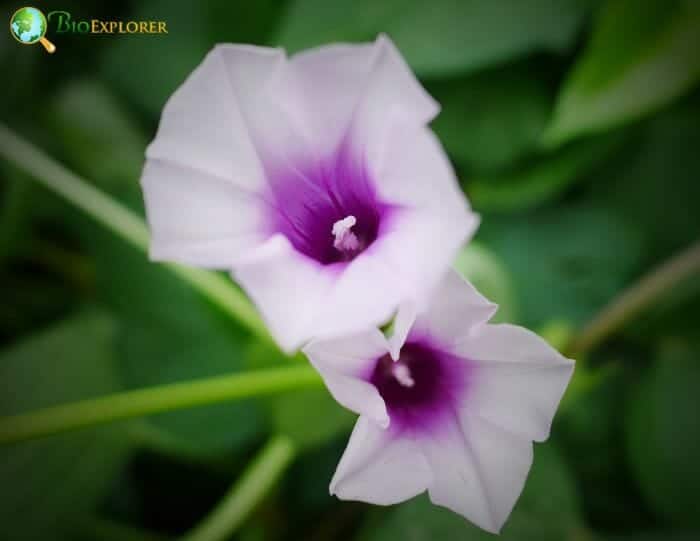
Ipomoea belongs to a family of flowering plants known as Morning Glory, which are unruly vines. They have blue, purple, lavender, or pink flowers that fade at night and open every morning.

Ipomoea, a vast genus that includes morning glories and sweet potatoes, is deeply rooted in Mexico’s flora. Species like Ipomoea purpurea produce vibrant funnel-shaped flowers in hues of blue, purple, pink, and white. Morning glories open at sunrise and wilt by evening, a daily rhythm that enchanted many indigenous cultures.
The Aztecs notably used seeds from certain Ipomoea species (like Ipomoea tricolor) in religious rituals due to their psychoactive alkaloids. Today, Ipomoea species remain an everyday sight in Mexican gardens, walls, and fences, symbolizing the fleeting nature of life and beauty.
They tolerate a variety of medium to poor soils and sunny to partially shaded conditions. With more than 600 species[1], Ipomoea is the largest genus in the family of flowering plants, Convolvulaceae.

The exact range of Ipomoea purpurea is unclear, but it is believed to be native to South America. Ipomoea is also known as Cypress Vine.

Ipomoea purpurea is an annual (short-lived) climbing herb plant. The stems of Ipomoea purpurea are hairy and maybe twinning or trailing. The leaf blade is oval, entire or three-lobed, pointed at the tip, cordate at the base, pubescent or glabrous.

The flowers of I. purpurea are solitary or in cymes with few flowers. The inflorescence stalk (stem) is about 12 cm long.











